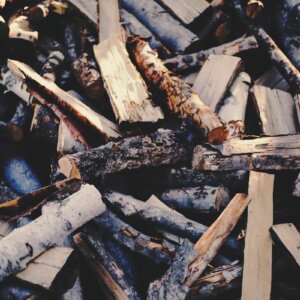Take a glance at anyone’s backyard garden. No matter where you go, you’ll likely find a squash plant growing. There’s something about these easy-to-grow and generous plants that demand a place in your garden bed — wherever you can manage to fit it in.
So whether you grow succulent zucchinis and crookneck varieties for summer sautés, invest in the long wait to cure your butternut for winter storage, or are exploring the incredible depth of variety available to the adventurous grower, there’s a squash for everyone. Read on to learn everything you need to know about successfully growing squash in your home garden.
Planting Squash Seeds
If you plant rows, you’ll want to space each plant 1 to 3 feet apart from its neighbor and 6 to 10 feet away from the next row.
I know that’s a lot of precious garden space, but the sprawling leaves of squash plants (even the bush types) will require as much room as you can manage. Vining types may even grow as far as 20 feet from their base!
Additionally, good ventilation is key to preventing many diseases, especially if you live in an area with humid summers.
When’s The Best Time To Plant Squash?
Summer squash should be planted mid-summer between late May and early July. You should allow at least 2 weeks after the last frost.
Winter squash requires a slightly longer growing season. You can still plant a batch during summer, however it’s best to plant winter squash during early Spring. Usually from mid February to early March.
How To Direct Sow Squash Seeds
Squash is very easy to start from seed. When beginning planting, you should sow them about 1 inch deep into the ground. Space summer squash about 24-30 inches apart, and space winter squash about 30-48 inches apart.
Leave the seeds in place for two weeks after germination. It’s also a good idea to sow 3 seeds in each planting spot, this way you can thin to the most significant plant during early growth stages.
Additionally, give your squash plants an area of the garden that receives full sun and enough moisture to keep them from wilting too much in the summer’s heat.
Can You Transplant Squash?
If you wish to get a head start on your growing season, another option is to start squash seeds indoors and then transplant them outdoors. Use small starter pots and give them lots of warmth and water during the early growth stages.
Wait until the last Spring frost has passed before transplanting your squash seedlings outside. Pick a spot in your garden with full sun, and add fertilizer to the soil before planting.
Dig holes a few inches deep, and space each hole 1 to 2 feet apart. Place your squash seedlings in the holes, cover with fertile soil, and water immediately. Keep an eye on them the first few weeks after transplanting, this is when they’re the most finicky.
Does Squash Need A Support System?
Some innovative gardeners manage their limited space by choosing to grow their squash vertically. While some varieties do naturally vine, others will need to be guided along the trellis or support.
Depending on the final size of the squash, each individual fruit may require support in the form of a sling or hammock to ensure their increasing weight doesn’t tear them from the vine prematurely.
Squash Growing Requirements
Whether you’re growing summer squash or winter squash- this plant is relatively easy to care for, and can even be a fun project for kids.
Mainly, you need to make sure they’re getting enough warm weather and moisture. You should give them about 1-2 inches of water per week. Pick a spot outside where they can get at least 6 hours of sunlight a day.
Soil Conditions For Squash
When we lived in the city, we converted our tiny postage stamp of a backyard into a garden with great hope, even though we only had a basic understanding of soil fertility. We made raised beds and filled them with straight composted horse manure from a local farm.
Experienced gardeners can already see my error. The huge nitrogen load was why most of the seeds we planted struggled … aside from the squash, that is.

The squash grew lush and full and provided the first harvest I have ever had the joy of putting up for the winter. I use that experience as a reminder of how much squash appreciates nutrient-dense soil.
It’s also very important that the well-drained soil has a pH between 6 and 6.5. Make sure it’s fairly warm, with a temperature of 70 degrees Fahrenheit. You should also rotate your squash plants every 2 to 4 years to keep the soil rich with nutrients.
Does Squash Need To Be Fertilized?
Apply a generous amount of fertilizer to the soil before planting. Squash performs best with a balanced fertilizer such as a 10-10-10. Whatever fertilizer you choose, make sure it has equal parts nitrogen, phosphorus, and potassium.
Give your plants the richest soil you can manage, digging in large amounts of manure, compost, or other organic matter as deeply as possible.
What Plants Are Squash Compatible With?
Squash have a number of companion plants. They will do well planted next to radishes, corn, peas, beans, and marigolds.
Related Post: Companion Planting For Summer Squash
However, you should avoid planting them next to pumpkins as they are incompatible. Pumpkins are very aggressive, and will be competing for water and space. You should also avoid planting squash near any member of the Brassica family.
Common Squash Problems
Many otherwise PG-rated gardeners may use up the year’s quota of profanity on squash bugs, and frankly, they’d be justified.
Though there are a few common maladies for the backyard garden’s squash plants, there’s something about the persistent attacks of these pests that merits a higher-than-normal level of rage.
Squash Bugs
Squash bugs may make their first appearance on your plants as a cluster of shiny, coffee-brown eggs on the underside of leaves. This is your warning sign that the invasion is coming.
Any time you find these eggs, destroy them by any means possible. I usually tear out the portion of leaf covered with the eggs and scrape them off with a butter knife or fingernail, or remove them with masking tape. A quick trip to the fire takes them out for good.
Related Post: How To Get Rid Of Aphids
Why the strong reaction? Well, squash bugs have the unsightly ability to produce an acid saliva that dissolves squash plants. They can kill off a healthy plant in surprisingly quick fashion, and before they’ve liquefied the base of the vine, they’ll have ruined many fruits in the meantime.
While you could try chemical means to fight them, an organic homesteader like me will never recommend spraying poison on food, ever. We opt for a multi-stage approach. The first level of attack is preventative. Instead, spray with soapy water to prevent bugs and nymphs.
Always rotate your squash beds every year (good advice for all crops). The second level is proactive. Go after the pests during the whole growing season because they are persistent!

Some organic gardeners wage war by laying a board in the garden near the squash plants. The squash bugs congregate under it at night, and if you get out in the cool of the morning, you can flip the board and take out as many of your foes as you can before they go back to destroying your harvest.
The third level is clearing out the beds at the end of the season. Squash bugs hide in dead plant material, so don’t use that as mulch for your next squash garden — either burn it or hot compost it somewhere far away.
The most success I have ever had with growing squash was an accidental discovery, but after my squash bug war this past summer, I’m switching over to this method entirely. Fashioning a ring of old woven-wire fencing, we made a compost pile and filled it with fall leaves and the mixed manure and bedding from the duck house.
We experimentally planted summer squash seeds in the resulting surface — a good 3 feet up from the ground. Though the garden was rife with bugs about 200 feet away, I never found a single squash bug egg, nymph, or adult on the (very) raised-bed squash. If you’re desperate to win against the tide of these six-legged foes, perhaps this unconventional approach may benefit you as well.
Vine Borers
A common pest for squash are vine borers. These little bugs are particularly destructive and difficult to get rid of when it comes to summer squash. If you see one of these, it may be hard to eliminate using organic methods.
Row covers are possibly the best prevention method. However, row covers protect against vine borers and other bugs such as bees. This means you will have to hand pollinate your young plants.
Don’t fret, this is a fairly easy process! First, you must identify the female flowers and male flowers on your squash. The main difference is that female flowers always have a small fruit on the back of the flower, while male flowers are always on a long narrow stem.
Once you’ve identified the flowers, find a male flower and snip right next to the main stem. Remove all petals, and use the center to pollinate the female flowers. This is done by gently rubbing in the center of the female flower.
Remember to hand pollinate right when the flowers start blooming. This process allows you to simultaneously protect your squash with row covers and avoid those pesky vine borers.
Powdery Mildew
Powdery mildew is another issue that may plague your squash plants. This fungal infection manifests itself as a white film or spots across the surface of squash leaves, and usually appears when weather conditions are right for it to spread. By that, I mean a stretch of dry, high-humidity, shady days under 80 degrees Fahrenheit are perfect … perfectly bad, that is.
The fungus usually only affects the leaves, but by the time you see it, it’s too late. The leaves will wither and die back, exposing the plants to the scalding sun and potentially ruining a harvest. Since the fungus overwinters, crop rotation is (again) key to preventing this disease from plaguing you year after year. Additionally, plan to always plant squash in a bright, sunny location that gets at least six hours of sunlight a day. Mildew can’t stand sunlight.
Harvesting Squash
When To Harvest Squash
Some varieties are ready in as few as 40 to 50 days, though most winter squash require a longer 150-day period to ripen fully. On average, fruit will reach maturity after about 60 days.
Not all squash should be treated the same, so make sure you treat every variety appropriately. Acorn squash, for example, doesn’t have a long storage life for a winter squash, and will actually degrade if fully cured. Plan on eating these delicately-flavored yellow squash beauties first while you wait for your butternut squash and Hubbards to cure.

How To Harvest Squash
Harvesting squash is a relatively simple endeavor, but you need to know what method is best suited for what squash. If it is tender summer squash you’re growing, simply cut them from the vines with a sharp knife when they reach the size you want — usually, the smaller, the more flavorful.
Related Post: Winter Squash Harvest And Storage Tips
Rather than twisting off or pulling, be sure to use a nice sharp knife to neatly sever the stem from the plant. This cut allows the scar to heal more quickly and keep pests from entering the wound.

The only time you want summer squash to reach hard-skinned maturity is if you’re planning to save seeds for the next year. In many cases, the fruit will not be nearly as tasty, though you could experiment with it anyway, and use it as you would a winter squash.
Be aware that squash readily interbreed, so plant accordingly if you want to harvest true seed.
For winter squash, it’s very important to allow them to fully ripen before you harvest, particularly if you plan on storing them over the winter. Exercise patience and wait until the rind is hard enough that you can’t dent it with a fingernail.
Then cut it from the vine, being sure to keep a small stump of stem, and allow it to cure in a warm, well-ventilated area for a few days before you bring it in for the winter.
Squash Varieties To Consider
This is probably one of the harder recommendation lists for me to write. There are just so many different, history-laced, and delicious squashes to consider!

Rather than recommending the familiar crookneck, zucchini, or jack-o-lantern pumpkins, however, I’ll try to assemble some of the more unusual and useful squashes that deserve some greater attention.
Summer Squash
- White Scallop: An ancient variety of Cucurbita pepo, these prolific plants are apparently delicious baked, fried, or prepared any way you can imagine. This variety is going in my garden next year!
- Desi Summer Squash: These compact little bush-types of C. pepo may be a good choice for a space-strapped garden, and they produce like mad. Use them the same way you would zucchini.
- Cocozella di Napoli: I grew these yellow-striped zucchini-type squash in my garden this past year and found that no matter how big they got, as long as the skin was still tender, so were they. Delicious fried and baked.
Winter Squash
- Green-Striped Cushaw: Sometimes, you can see these delectable, large squash being sold as fall decorations, but allowing them to merely rot on the front porch is a real crime against your kitchen. These sweet heirlooms of the C. mixta lineage are what we prefer to pumpkin when we make our fall pies. The flavor is rich and smooth when cooked down.
- Blue Hubbard Squash: This huge winter squash is famous for its long storage capabilities. Cured fruits are usually able to last for around six months — plenty of time for you to make it through the worst of winter.
- Buttercup Squash: This turban-type variety from C. maxima was developed as a cold-climate growing alternative for those who wanted sweet potatoes but lacked the right conditions for them. With a flavor described as satiny, sweet, and chestnut-like, what more could you want from a beautiful winter squash?
- Musquee de Provence Pumpkin: Though not a “true” pumpkin as it is derived from C. moschata rather than C. pepo, this plant is more tolerant of hot and humid weather, and strikingly fluted to boot.
Squash Background
Our English word “squash” comes from the Massachuset Indian word “askutasquash” which means “eaten raw or uncooked.” This plant is one of the many contributions that the Native American Nations’ agricultural prowess has given the world, and ranks with beloved crops such as the pepper, tomato, potato, and of course, corn.
Related Post: Growing Pumpkins
An ancient, and still very useful way of planting squash is the “three sisters” method of intercropping corn, beans, and squash into the same mound. The corn provides structure for the climbing beans, the beans fix nitrogen for the nutrient-hungry squash and corn, and the squash naturally mulches and shades the ground with its large, sun-blocking leaves. Talk about real teamwork!
Domesticated Squash
There are five domesticated species of squash: Cucurbita maxima, C. moschata, C. pepo, C. argyrosperma, and C. ficifolia. You’ll often see these species mentioned when researching different varieties for your garden.
Though they are all generally grown the same way, you may find that individuals of a certain species are more pest-resistant or vigorous in your particular climate. Do some experimentation with different seeds, and have a good time.
If you haven’t given the easy-to-grow, super-generous, and truly American squash a chance in your garden, you are really missing out. What varieties are you watching ripen in your garden this year? What’s your favorite way to prepare the bounty? Let me know in the comments below.










































I found that growing squash on bare soil is not a good idea. All my plants, no matter how much I water them, wilt on the bare ground. The ones that are growing on weeds, or in the shade of trees and bushes, are doing much better.
Thanks for the tip, Jeff! Do you mulch your squash, too? I imagine that could yield similar results for people who don’t have that shady option. What varieties of squash do you grow?
Hi folks.
I need to do some whining about my squash growing disaster last summer. The soil in the yard of my son’s rental was so poor that I spent a fortune on bags of peat and tried gardening in that on top of the ground. The ground that passed for his yard looked and felt like a bombing range.
The cucumbers wilted and died in spite of being watered regularly. Upon closer examination I found grey beetles that I positively identified as squash beetles. I found them everywhere in the squash plants and I mean everywhere. I’m not a pesticide/herbicide user and need some advice for just how to prevent these parasites from getting started. Clearly they took me by surprise. I’m not completely new to gardening but the ground here is so unhealthy that I’m going to be a few more seasons trying to get it in shape. I may just capitulate to raised beds.